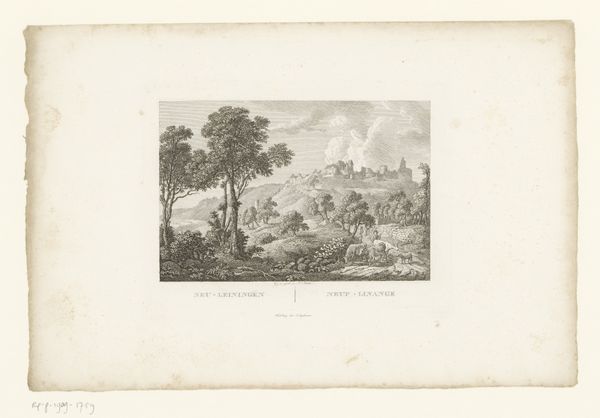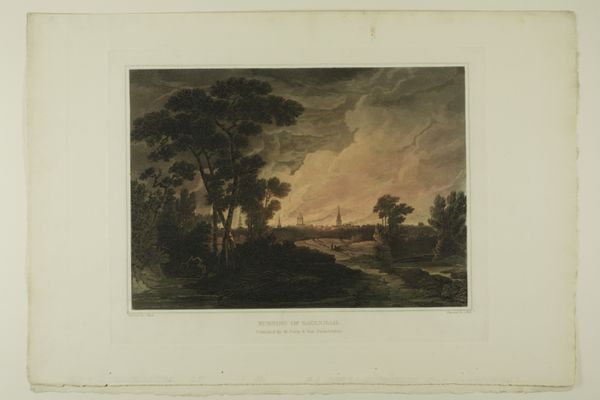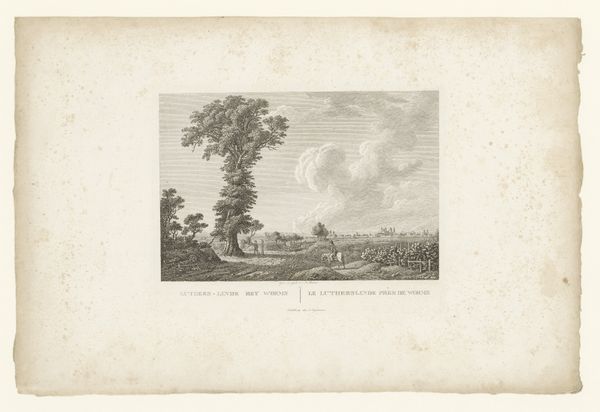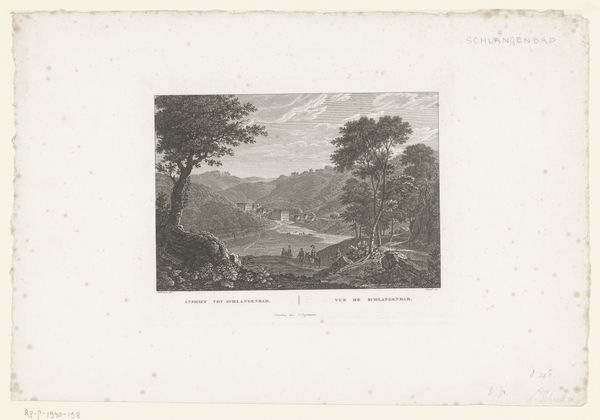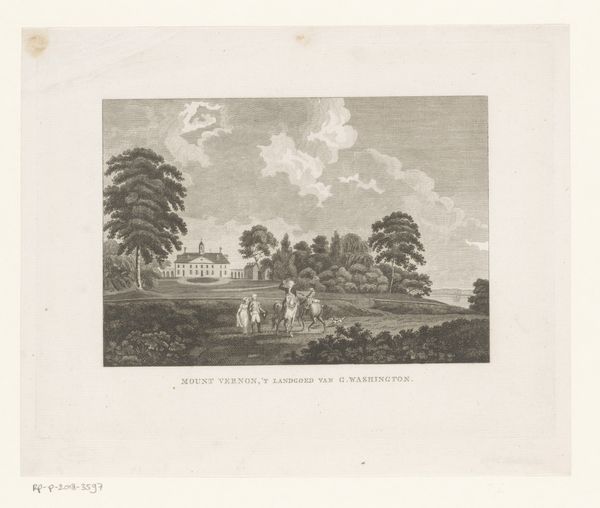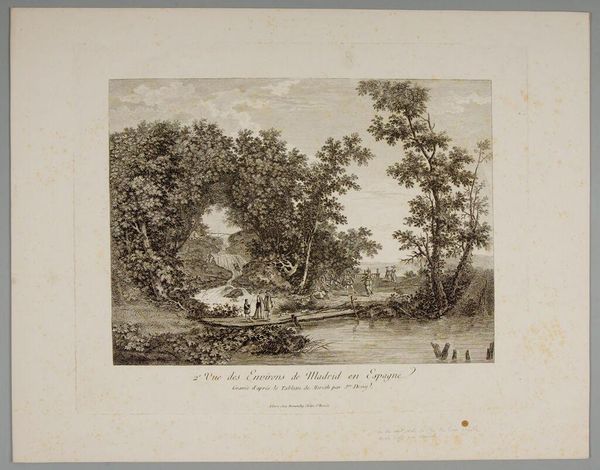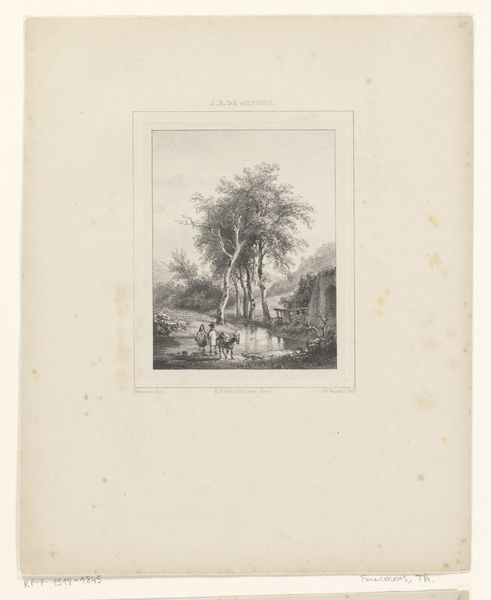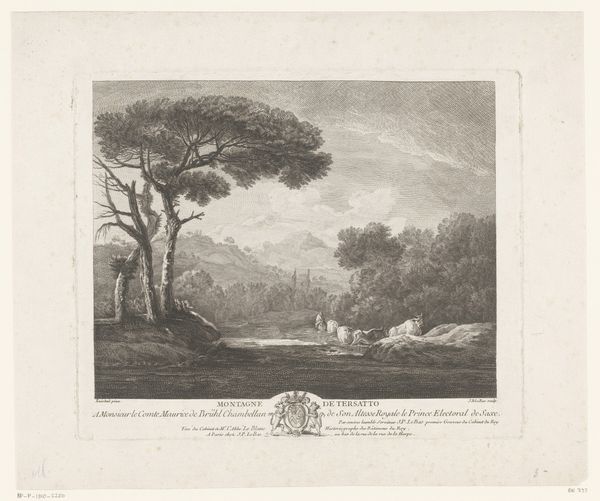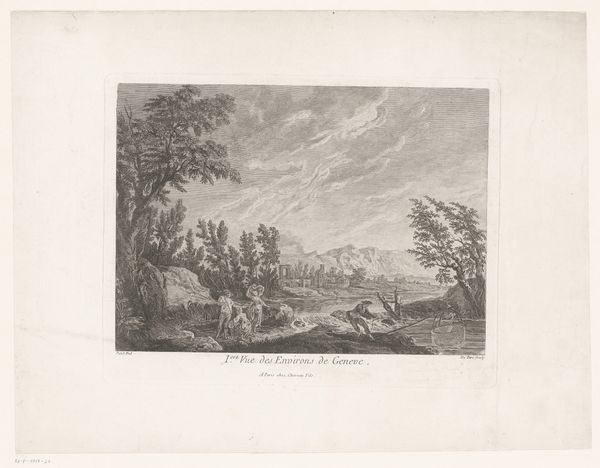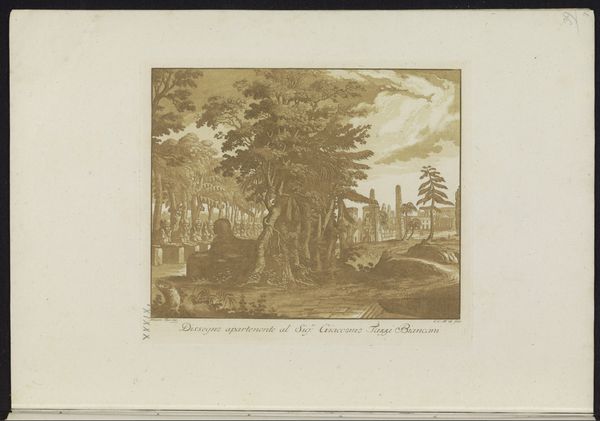
Temple of Tussis or the God of Coughing, plate twenty-nine from the Ruins of Rome Possibly 1798
0:00
0:00
drawing, painting, print, etching, paper, watercolor
#
drawing
#
water colours
#
painting
# print
#
etching
#
landscape
#
paper
#
watercolor
#
academic-art
#
realism
Dimensions: 448 × 330 mm (sheet)
Copyright: Public Domain
Editor: So, this is “Temple of Tussis or the God of Coughing,” a print made by M. Dubourg around 1798. It seems to be a watercolor etching on paper, showing a temple ruin nestled in a lush, green landscape. The scene has a melancholy sort of beauty. What do you make of it? Curator: Melancholy is a key word here. What we see represented is a ruin, but also the persistent power of nature. The Temple of Tussis – coughs – brings to mind illness and mortality, things that civilizations often try to push to the margins. But look at the image; nature reclaims even those attempts at the edge. Consider the scale of the image as well; two figures appear near the temple; tiny, really. Does that imply anything to you about human insignificance? Editor: It definitely emphasizes the power of nature and the inevitable decay of human structures. Is there a specific significance to coughs or illness in the 18th century? Curator: Absolutely. Think of the great plagues that swept through Europe; coughs and sickness were potent symbols of death's ever-presence. Representing it here as a 'god' almost suggests a kind of acknowledgment of that inescapable reality, a facing up to fear, even perhaps, an act of supplication. Note too the dark sky overhead… do you think the artist implies a looming storm, perhaps of pestilence, hardship, and suffering, or is it more symbolic? Editor: It feels symbolic, adding to the overall mood of transience and fragility. It’s like a reminder of our mortality. Seeing the scene in that light makes the temple a powerful symbol beyond just a ruin. Curator: Precisely. It's a cultural memory etched onto paper, revealing not just what was, but what we continue to fear and, perhaps, attempt to placate. Editor: I never would have looked at this landscape in quite that way without considering its symbolism of mortality and cultural memory. Thank you.
Comments
No comments
Be the first to comment and join the conversation on the ultimate creative platform.

